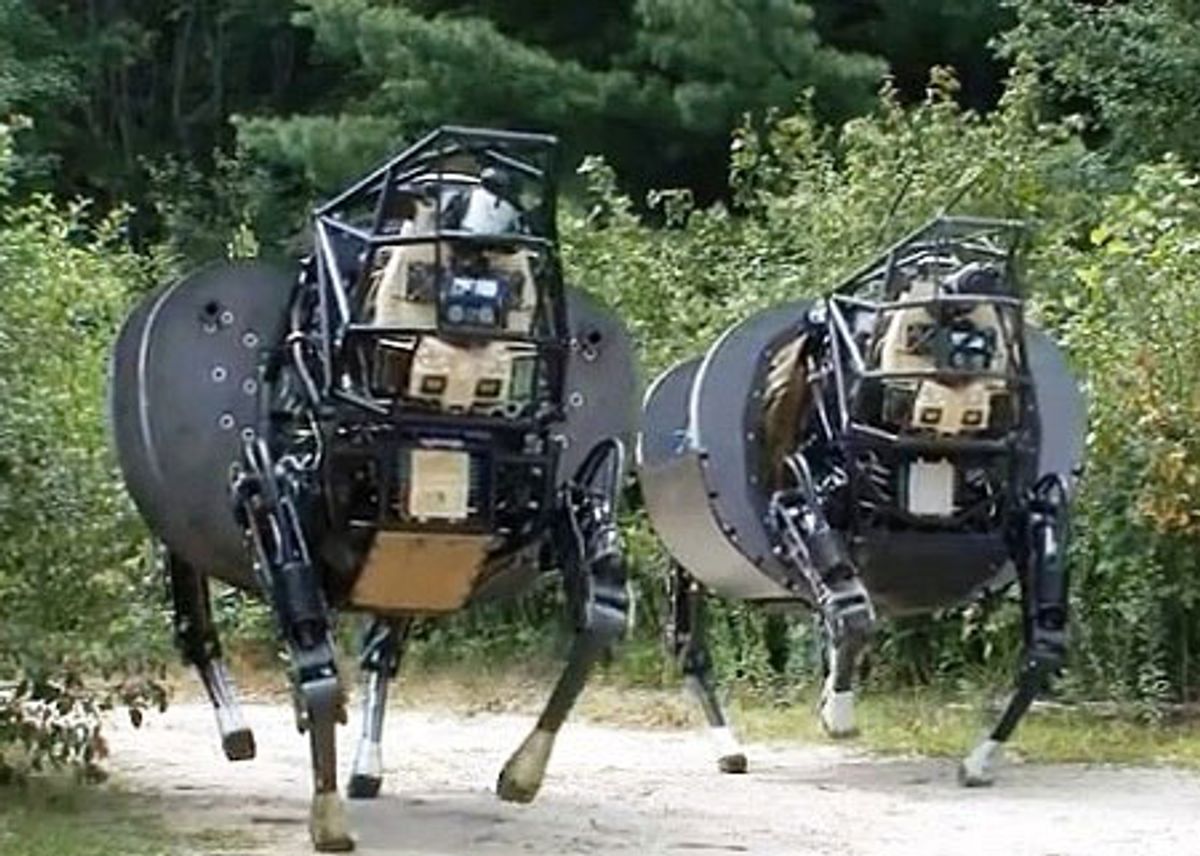I’m not exactly sure what you’d call a group of Boston Dynamics’ LS3 “AlphaDog” robotic pack animals. A herd, I guess? Two LS3s might not quite constitute a herd, but it’s certainly impressive to see both of them in operation, and just as impressive is this demonstration of some new features including autonomous person following and a much quieter engine.
LS3 has learned how to use its sensors to follow people around through all sorts of terrain, and the robot is learning how to obey verbal commands and gestures, all skills that will be important as LS3 trots toward its goal of carrying the gear for a squad of soldiers (about 400 pounds worth) for 20 miles without needing a break.
“We’ve refined the LS3 platform and have begun field testing against requirements of the Marine Corps,” said Army Lt. Col. Joe Hitt, DARPA program manager. “The vision for LS3 is to combine the capabilities of a pack mule with the intelligence of a trained animal.”
To me, this sort of implies that pack mules are pretty dumb and untrainable, which may well be true. The upside of a pack mule, I suppose, is that you can refuel them just about anywhere, and if you get hungry, well, after lugging around all your gear for you I imagine that said mule is probably rather beefy, as it were. On the other hand, if the mule is so dumb that it won’t do what you want it to do most of the time, that’s potentially worse than useless. The vision for LS3, then, is really to create a pack animal (able to clamber around after us in a way that wheeled vehicles just can’t) that will reliably do what it’s told, even while being shot at.
The other advantage that a real mule has is that most of the time, it doesn’t sound like a gasoline engine. LS3’s predecessor, BigDog, had a well-deserved reputation for sounding like a swarm of giant angry robotic bees thanks to the gas engine powering the hydraulics. In practice, this amount of noise will either send your enemies running in terror, or draw them right to you. Either way, not ideal, but you’ll notice in the video that you can actually hear something besides LS3’s engine (its footsteps, for example). This latest version of the robot is 10 times quieter than the original prototype.
Now that LS3 is a little more manageable (and tolerable), LS3 is going to spend the next couple of months learning how to amble along at 7 mph before going through additional testing on a military base in December. Next year, the test regime will culminate in a Marine Corps Advanced Warfighting Experiment which will see the LS3 embedded with a squad of humans for an operational exercise.
[ Boston Dynamics ] via [ DARPA ]
Evan Ackerman is a senior editor at IEEE Spectrum. Since 2007, he has written over 6,000 articles on robotics and technology. He has a degree in Martian geology and is excellent at playing bagpipes.



